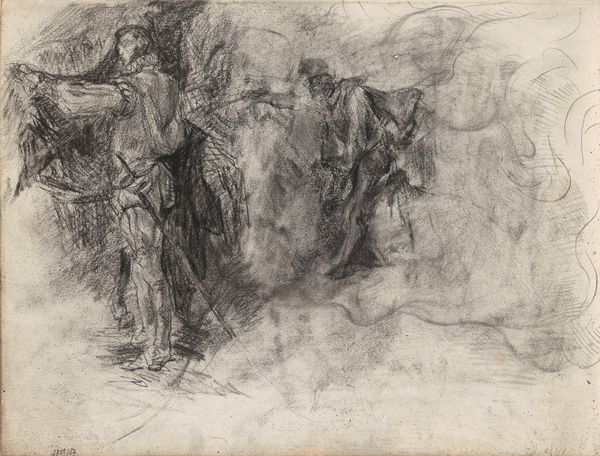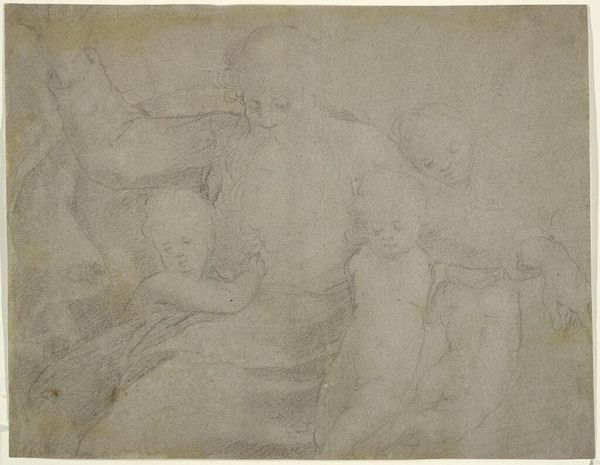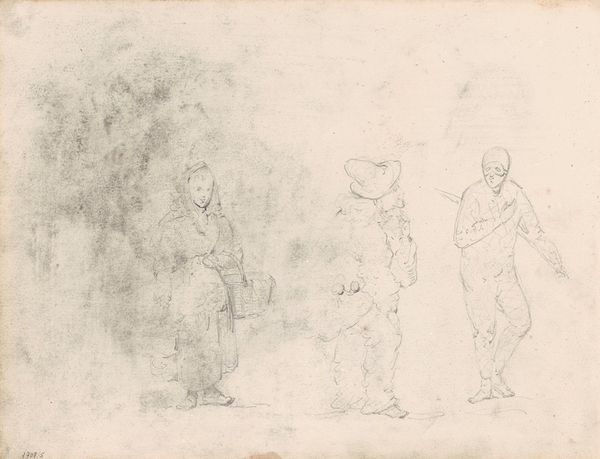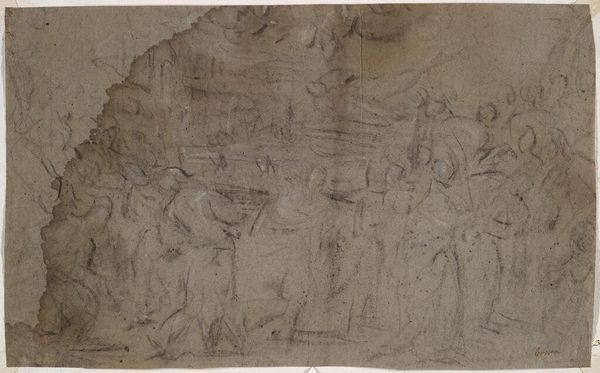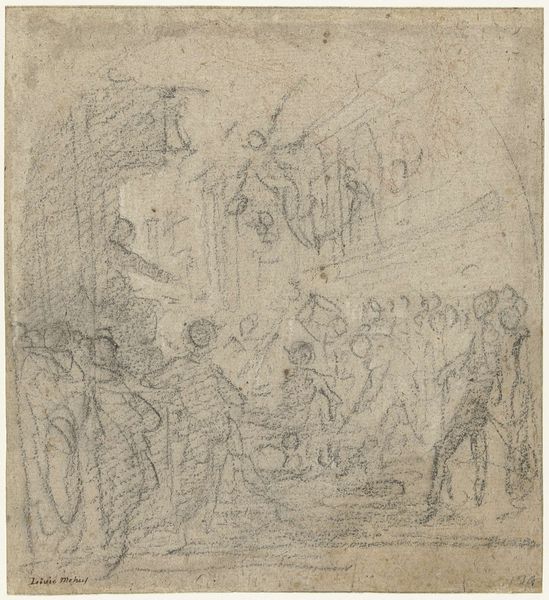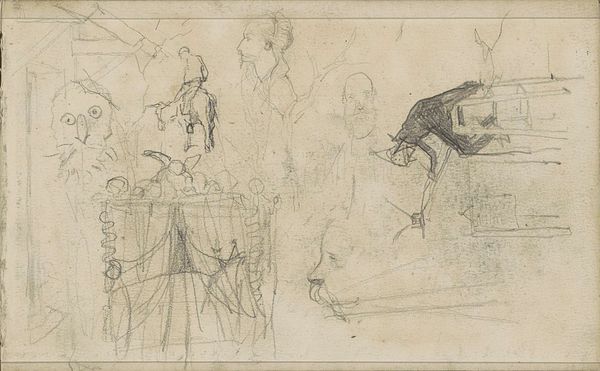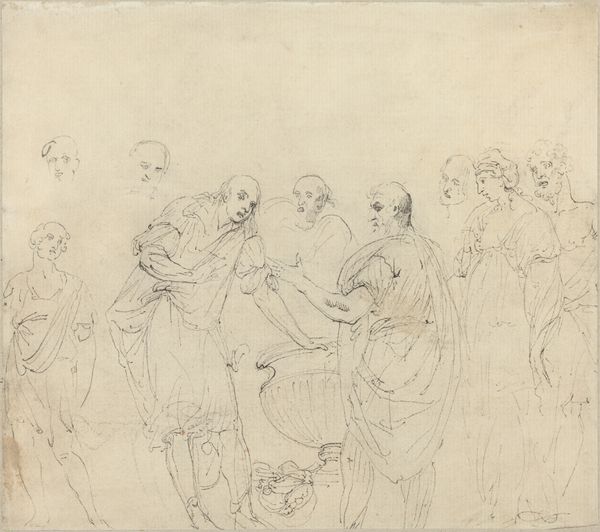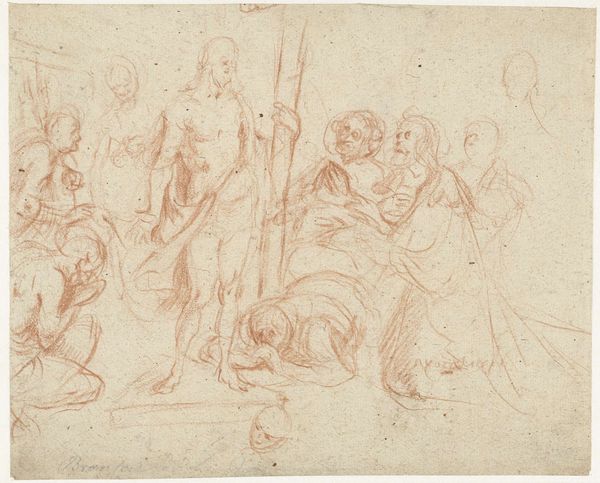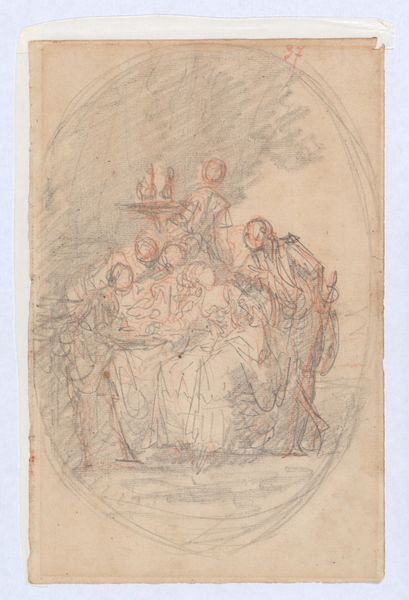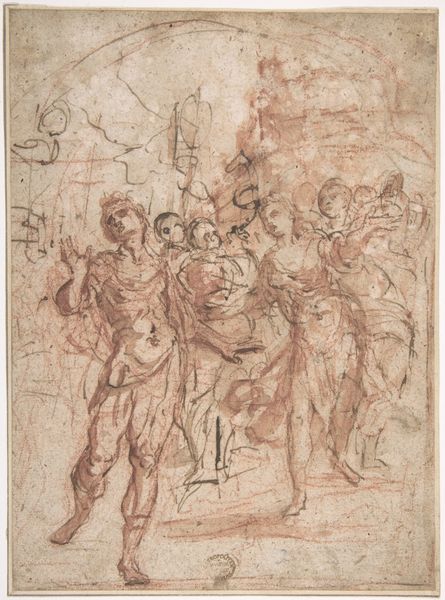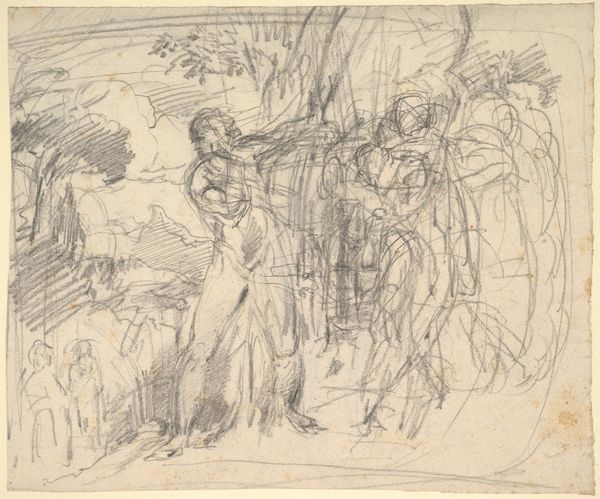
drawing, pencil
#
drawing
#
amateur sketch
#
light pencil work
#
pencil sketch
#
incomplete sketchy
#
figuration
#
11_renaissance
#
ink drawing experimentation
#
pen-ink sketch
#
pencil
#
rough sketch
#
sketchbook drawing
#
italian-renaissance
#
sketchbook art
#
initial sketch
Dimensions: height 204 mm, width 273 mm
Copyright: Rijks Museum: Open Domain
Editor: Here we have Federico Barocci’s "Vluchtige schets voor de apostel Thomas," a pencil drawing dating from around 1545 to 1595. It's currently housed at the Rijksmuseum. The sketchiness almost makes it feel like we're intruding on the artist's private process. What can you tell me about this study? Curator: The sketch offers a fascinating glimpse into the artistic and social contexts of the Counter-Reformation. Consider the Council of Trent's emphasis on clarity and emotional impact in religious art. Barocci, known for his emotional and accessible style, grapples with portraying a key biblical moment—Thomas's doubt and subsequent recognition of Christ's wounds. Do you see how the preliminary nature of the sketch allows for experimentation with gesture and composition, aspects later formalized in finished works meant for public veneration? Editor: So, it's less about a polished presentation and more about exploring the emotional narrative for the viewer? The sketch highlights a very specific point: when Christ revealed his wounds and convinced Thomas that the resurrection really happened, contrary to Thomas' doubts. It shows him being transformed, in a state of conversion. Curator: Precisely. Furthermore, think about the status of drawings during this period. They were often seen as instructional tools within workshops or personal explorations, not necessarily intended for public display. This allows us to analyze the artist's process free from certain constraints, understanding his commitment to producing art in line with the Catholic church's renewed vigour. Editor: It is great to understand the status drawings held, compared to now. It gives so much more meaning and richness to what’s in front of me now! Curator: Exactly! By considering these sketches within their socio-political context, we understand how even seemingly simple works reflect complex negotiations between artistic expression, religious doctrine, and audience engagement.
Comments
No comments
Be the first to comment and join the conversation on the ultimate creative platform.
